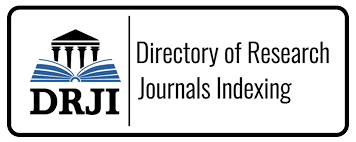Preliminary Selection Criteria
Jurnal Kajian Pembaruan Hukum has a high standard for publication. All the published papers should undergo the peer-review process by two experts in the field, following these indicators. Before the peer-review process starts, the Editorial Board will ensure that the manuscript has complied with sufficient academic writing and followed the author's instructions. This desk review stage verifies the title, abstract, introduction, analysis, conclusion, reference and language quality of the manuscript. If the manuscript does not meet these criteria, the author(s) will get advice for the desk review revision(s). The Editorial Board may also directly reject the manuscript if it is below the threshold.
Prior to submitting the manuscript to this journal, all authors are advised to read and do self-assessment by referring to this manuscript's preliminary selection criteria. It becomes a key instrument to help the journal management in processing the manuscript.
(A)
|
(B)
|
(C)
|
||
| Title: Concise, descriptive, and represents the contents of the manuscript. | ||||
|
Abstract: Concise, clear, and descriptive that at least cover a brief introduction to the issue, objective, methodology, summary of the results, conclusion, and implications of the study.
|
||||
|
Keywords: 3-4 keywords that are specific and represent the intention of research.
|
||||
|
Introduction: Clearly and succinctly describe the adequate significance of the study, presenting the important problems and relevant previous studies, limitation of the discussion, gap analysis, novelty concepts, the aim of the study, ended it with research question or structure of the discussion.
|
||||
|
Method: Clear and replicable, describing how research objectives are achieved with the appropriate methods, tools, procedures, and stages.
|
||||
| Results and Discussion: Meaningful. A good discussion is written as a dialogue that reveals the progress of the research in comparison to previous researches. | ||||
| Conclusion: The conclusion should comprise a summary of research results (the most important research finding) that relates to the objectives written in the introduction. | ||||
| References: Accountable and about 80% of the pieces of literature from primary sources (reputable journals) and up to date (last 10 years). Use reference management tools. | ||||
| Language: The manuscript is well written in the English language, with good paraphrase and no grammatical errors. | ||||
Decision matrix
| Probability | |
85-100
|
Most likely to be published with little discussion with Editor/Reviewer
|
70-84
|
Possible minor revision (if there are no mistakes in principle)
|
50-69
|
Possible major revision
|
25-49
|
Most likely to be rejected in the preliminary evaluation
|










